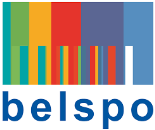Molenberghs, Verbeeck, Vandersmissen and Godderis provide regular reports on the evolution of the 14-day incidence of COVID-19 in Belgium by employment sector. The authors used two main data sources: data from the National Social Security Office (RSZ/ONSS) and IDEWE contact tracing data.
The first data source, RSZ/ONSS, allows the study of the 14-day incidence of positive COVID-19 cases among the majority of the Belgian workforce, including workers in private and public sectors, interim employment and job students. Thanks to an additional linkage, the data source also includes self-employed workers. The evolution of the 14-day incidence of COVID-19 is investigated for the 5 levels of the Nomenclature statistics on the economic activities of the European Community (NACE).
The second data source, the IDEWE contact tracing data, covers employees of companies affiliated with IDEWE, an external service for prevention and protection at work. However, an index case can be any person in the workplace (e.g., in education, pupils are also included). The 14-day COVID-incidence of index cases is investigated using 10 IDEWE customer segments, which resemble the NACE level 1 and 2.
Each report provides a wealth of information. An overview of all reports is available under "Monitoring Belgian COVID-19 infections in work sectors in 2021" via: https://www.info-coronavirus.be/en/celeval-2022/
Below, a brief overview of the results from the RSZ/ONSS analyses on NACE level 1 is provided. The full reports can be consulted via the weblink.
Report of 23 December 2022
- Human health and social work activities
Report of 23 November 2022
- Human health and social work activities
Report of 26 October 2022
- Human health and social work activities
- Public administration, defense and social security
Report of 14 October 2022
- Human health and social work activities
- Public administration, defense and social security
Report of 30 September 2022
- Human health and social work activities
- Electricity, gas, steam and air conditioning supply sector
- Public administration, defense and social security
- Education
Report of 16 September 2022
- Human health and social work activities
- Public administration, defense and social security
Report of 31 August 2022
- Human health and social work activities
Report of 3 August 2022
- Human health and social work activities
Report of 13 July 2022
- Human health and social work activities
Report of 16 June 2022
- Information and communication
- Human health and social work activities
Report of 1 June 2022
- Information and communication
- Human health and social work activities
Report of 21 April 2022
- Human health and social work activities
- Electricity, gas, steam and air conditioning supply
- Public administration, defence, compulsory social security
Report of 8 April 2022
- Human health and social work activities
Report of 2 February 2022
- Education
- Human health and social work activities
Report of 26 January 2022
- Education
The full report (ENG): https://fdn01.fed.be/documents/b1bee3753fed08b19352e4f282b28154/COVID%20RZS2021_v24.pdf
Report of 20 January 2022
-
Arts, entertainment and recreation
-
Education
The full report (ENG): https://fdn01.fed.be/documents/673ce0c9025bb2f0d475ab9ffc386590/COVID%20RZS2021_v23.pdf
Report of 12 January 2022
- Arts, entertainment and recreation
- Information and communication
- Professional, scientific and technical activities
- Accommodation and food service activities
The full report (ENG): https://fdn01.fed.be/documents/4649c2545cc24d3be81bed2b0d69bacc/COVID%20RZS2021_v22.pdf
Report of 30 December 2021
- Arts, entertainment and recreation
- Information and communication
- Professional, scientific and technical activities
Report of 20 December 2021
- Education
- Electricity, gas, steam and air conditioning supply
Report of 1 December 2021
- Education
- Human health and social work activities
- Electricity, gas, steam and air conditioning supply
Report of 18 November 2021
- Electricity, gas, steam and air conditioning supply
-
Human health and social work activities
-
Education
-
Other service activities
Report of 4 November 2021
- Education
- Human health and social work activities
- Public administration and defence
Report of 21 October 2021
- Education
- Human health and social work activities
Report of 8 October 2021
- Education
- Human health and social work activities
Report of 24 September 2021
- Administrative and support service activities
- Human health and social work activities
Report of 8 September 2021
- Administrative and support service activities
- Transportation and storage
- Human health and social work activities
Report of 6 August 2021
- Accommodation and food service activities
- Arts, entertainment and recreation
- Wholesale and retail sale
Report of 18 July 2021
- Accommodation and food service activities
- Arts, entertainment and recreation
- Professional, scientific and technical activities
- Wholesale and retail sale
Report of 18 June 2021
Report of 3 June 2021
Report of 21 May 2021
- Water supply and related activities
- Education
- Manufacturing
- Construction
- Wholesale and retail trade
- Real estate activities
Report of 7 May 2021
- Water supply and related activities
- Transportation and storage
- Construction
- Manufacturing
- Administrative and support service activities
- Wholesale and retail trade
Report of 23 April 2021
- Water supply and related activities
- Administrative and support service activities
- Wholesale and retail trade
- Transportation and storage
- Manufacturing
- Other service activities
- Real estate activities
- Construction
Report of 9 April 2021
- Education
- Administrative and support service activities
- Other service activities
- Construction
- Water supply and related activities
Report of 31 March 2021
- Education
- Administrative and support service activities
- Water supply and related activities
- Real estate activities
- Other service activities
- Construction
The full report (ENG): https://d34j62pglfm3rr.cloudfront.net/downloads/COVID+RZS2021_v4.pdf

